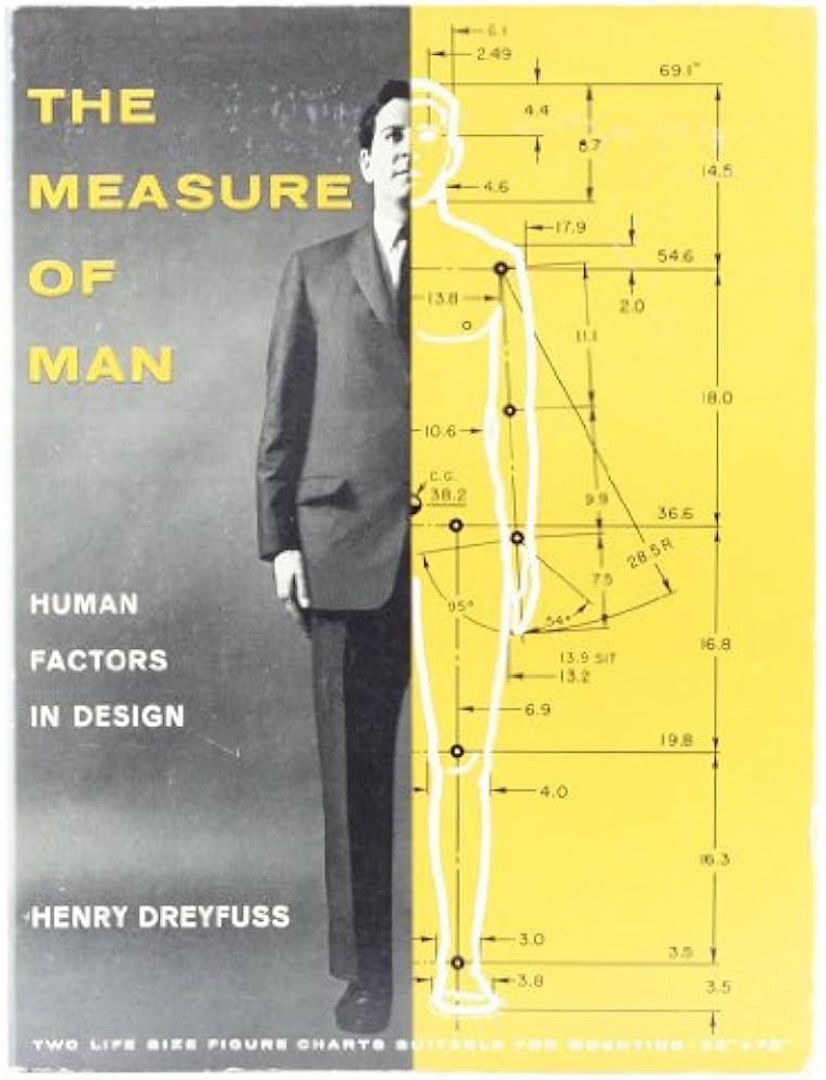The importance of Workplace Ergonomics
- Layrd Design Ltd
- Oct 27, 2023
- 4 min read

What are Ergonomics?
Ergonomics refers to the science of designing spaces and objects to fit with the capabilities and limitations of the human body.
In the workplace, this means creating an environment that is adapted to the human body, not the other way around.
Awareness of ergonomics can be used to enhance workplace safety and improve physical health.

HENRY DREYFUSS
Ergonomic Icon
Dreyfuss was an American industrial designer and an important early theorist in ergonomics.
His firm, Henry Dreyfuss and Associates, used new techniques to study human ergonomics in the workplace, such as measuring and quantifying variations in height, weight, girth, range of motion, range of vision, etc. among the population.

Dreyfuss' Research
As part of their research, Dreyfuss Associates divided the male and female population into size percentiles, ranging from 1 to 100. They then created human templates to represent each of the percentiles, from the smallest woman to the largest man.
With this information in hand, industrial designers could evaluate product designs using real-world data directly from Dreyfuss’ human templates.

DESIGNING FOR PEOPLE
Dreyfuss’ book, Designing for People (1955), outlined the ergonomic principles that guided his firm during the development of many iconic product designs.
These include the early Hoover upright vacuum cleaner, the round Honeywell thermostat, Princess and Trimline telephones and the origami-inspired folding Polaroid SX70 camera.

THE MEASURE OF MAN
Dreyfuss’ book, The Measure of Man (1960), contained extensive data on the movement of the human body. Even today, industrial designers consider it the “bible of ergonomics.”
Over the years it has been updated to include new office-based scenarios, such as the use of computer monitors and keyboards.
In a world where many of us spend a significant portion of our day at a desk, proper ergonomics are crucial to mitigate health risks.
Ergonomic Importance
Ergonomic injuries are a major cause of workplace injury and illness.
Neglecting ergonomics can lead to a range of health issues, including musculoskeletal disorders (MSDs), eye strain and fatigue.
MSDs account for 32% of all workplace injuries in the EU.
If we don’t pay attention to proper office ergonomics, these repetitive work habits can have a negative impact on our physical health.

Types of MSD

The Solution
Proper workstation ergonomics
Movement throughout the day
Training and education

Workstation and Ergonomics
MSD injuries can occur when employees repeat the same motions over and over again, particularly when maintaining a poor posture.
To help prevent MSD-type injuries, employees should be provided with fully-adjustable chairs as well as ergonomic work surfaces, such height-adjustable desks and workstations.
Adjustable chairs and desks should support a good, upright posture: the chair's height should allow feet to rest flat on the floor with knees bent a 90-degree angle; the desk should be at a comfortable height to prevent slouching or reaching.
Monitors should be at eye level, about an arm's length away. Keeping the head and neck aligned will reduce neck strain and eye fatigue.
Shorter people need to be able to raise their chair height, while taller people benefit from being able to raise their computer monitors. Additional adjustments like lumbar support or footrests can help address problems such as lower back pain.
Keyboards and mice should be at a height that allows the wrists to stay in a neutral position, avoiding excessive flexion or extension.
A split or curved keyboard allows the shoulders to relax and an ergonomic mouse fits to the shape of the hand.
Adequate and adjustable lighting can reduce eye strain and improve comfort.

Movement
Ergonomic workstations are beneficial because they encourage the user to change positions throughout the day, which helps to minimise the hazardous effect of repetitive motions.
Intermittent standing whilst working can also help to improve circulation and alleviate compression in the lower back caused by extended periods of sitting.
There is increasing evidence to suggest that sitting all day long can be as dangerous to your health as smoking cigarettes.
5 hours of sitting is equivalent to smoking 1.25 packs of cigarettes daily, even if you exercise for 30 minutes, 5 days a week.
Employees should take microbreaks every 30-60 minutes to stand, stretch and change position.
Stretching can help relieve muscle tension and improve flexibility. Incorporating simple stretches into daily routines can be highly beneficial.
Some work tasks can be performed while standing or using a treadmill desk, transforming your workstation from sedentary to active.
Walking meetings are a great way to encourage movement and have been shown to boost creativity.
Encouraging employees to move throughout the day can counteract the negative effects of extended periods of sedentary work. This includes posture problems such as hunching or slouching, both of which are related to prolonged sitting.
Employers should encourage moving frequently and participating in certain stretches to help lengthen the muscles in the back, shoulders, neck and chest.
Looking up from your screen frequently and gazing outside can help to reduce eye strain and headaches.

Training and Education
Employees should be taught how to apply ergonomic principles to their daily routines, including proper lifting techniques, posture awareness and the importance of taking regular breaks.
Ergonomic investment can help to attract employees, as well as increase productivity and retention rates.

In summary, the benefits of Workplace Ergonomics:
Prevention against workplace injuries and MSDs.
Improved focus and productivity levels.
Enhanced quality of work and employee engagement.
Reduced absenteeism and turnover.
Reduced healthcare expenditures / decrease compensation claims.
A safer workplace.
A healthier body.
A happier life.
Get in contact:
Contact the team today for support on your workplace ergonomics on 01223 952992 or info@layrddesign.co.uk




Comments